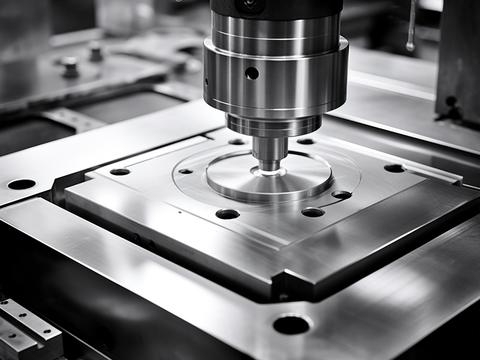How to solve the problem of unevenness in hardware stamping processing?
The issue of unevenness in hardware stamping parts (such as inconsistent thickness, uneven deformation, and dimensional deviations) should be addressed by examining three key areas: 'mold precision, process parameters, and material condition.' The specific solution can be implemented according to the following steps:
一.Prioritize inspecting molds: Address the issue of 'insufficient source accuracy'
The mold is the core of stamping part forming, and precision defects can directly lead to uneven processing. Three key points need to be checked carefully.
Repair the mold cutting edge and clearance: If the cutting edge is worn, chipped, or the clearance between the male and female molds is uneven (such as one-sided clearance being too large or too small), it can cause uneven stress during material shearing or forming. The cutting edge should be re-sharpened to a sharp condition, and the mold clearance should be calibrated with a feeler gauge to ensure that the clearance deviation along the entire circumference is ≤0.02mm (adjust according to the material thickness).
Correction of mold positioning and guidance: Loose locating pins and worn guide posts and bushings can cause the workpiece to shift during each stamping, resulting in inconsistent dimensions. Worn guide posts and bushings need to be replaced, locating pins should be refastened, and auxiliary positioning blocks (such as material stop pins and side blades) should be added if necessary to ensure the workpiece positioning error is ≤0.01mm.
Repairing the mold cavity and blank holder ring: If the cavity surface is worn or deformed, or if the blank holder ring pressure distribution is uneven (for example, excessively high local pressure causing uneven material stretching), the cavity should be polished to below Ra0.8, and the blank holder spring/cylinder pressure should be adjusted to ensure that the blank holding force is evenly distributed along the edge of the blank (pressure marks can be tested with test paper to check for continuous and uniform distribution).
二. Optimize process parameters: Address the issue of 'uneven force during the process'
Improper parameters such as pressure, speed, and feeding rhythm during the stamping process can lead to uneven stress distribution when forming the material, requiring targeted adjustments:
1.Adjust stamping pressure and speed: If the pressure is too low, it may result in incomplete forming, while excessive pressure can cause the material to overstretch or over-compress, leading to uneven thickness. Pressure needs to be gradually adjusted through trial stamping according to material thickness (such as 1mm cold-rolled steel sheet) and forming process (such as blanking or stretching), generally starting from 80% of the standard pressure for testing. At the same time, stamping speed should be reduced (especially for stretching processes) to prevent deformation deviations caused by instantaneous excessive force on the material.
2.Standardize feeding accuracy and pitch: If the pitch deviation of the automatic feeder and the feeding speed do not match the stamping rhythm, the billet feeding position may be inconsistent. It is necessary to recalibrate the feeder pitch (by measuring the deviation between the actual feed distance and the set value using a ruler) to ensure the pitch error is ≤0.03mm, while simultaneously adjusting the feeding speed and the press slider speed to prevent the billet from being "ahead/lagging" during stamping.
3.Control stamping temperature and lubrication: Metal materials (such as stainless steel and high-strength steel) are prone to local hardness changes and uneven forming due to heat generated by friction during high-speed stamping. It is necessary to apply a special stamping lubricant (such as extreme pressure lubricating oil) on the mold edges or cavities. For thick plates (≥3mm), a cooling system (such as oil spray cooling) can be added to control the mold temperature at ≤50°C.
三. Control the material status: Address the issue of 'uneven basic performance'
Variations in the material's thickness and inconsistent mechanical properties can lead to different processing results under the same procedure, so it is necessary to manage the following two points in advance:
1.Screening Material Thickness and Flatness: During procurement, the thickness of the materials should be randomly checked (using a micrometer to measure thickness at different locations, ensuring a deviation of ≤0.01mm) to avoid using uneven blanks with wrinkled edges or raised centers. If the material has slight warping, a leveling process can be added before stamping (for example, using a leveling machine to flatten it), ensuring the flatness of the blank is ≤0.1mm/m.
2.Uniform mechanical properties of materials: Large differences in yield strength and elongation between different batches of materials (for example, a deviation of more than 10 MPa in the yield strength of cold-rolled steel) can result in varying degrees of deformation during stretching or bending. Suppliers are required to provide material certification (such as an SGS report) to ensure that the fluctuation range of mechanical properties within the same batch is ≤5%. If necessary, small-batch trial stamping should be conducted first to verify material compatibility.



